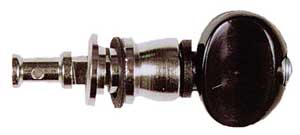When we’re discussing things ukulele, there’s nothing worse than being caught off guard when someone refers to something like the nut or fret on a ukulele, and you have no idea what they mean. So to clarify any confusion, and to get all of us on the same page, let’s look at the different parts of a ukulele.

Whenever you pluck a string on the ukulele, the string vibrates the saddle, which is the white piece of plastic or bone that is supported by the bridge on the top of the ukulele. The energy that comes from plucking the string transfers from the saddle and bridge to vibrate the top of the ukulele. The body of the ukulele acts as a chamber which resonates the sound and then projects it out of the soundhole.

The neck of the ukulele is attached to the body. The top side of the neck is considered the fretboard. The frets are the vertical pieces of metal that lay across the fretboard.
At the top of the fretboard, the strings rest in the grooves of the nut, which then attach themselves in the tuners on the headstock.

The picture above shows a ukulele tuner detached from the headstock.
It’s quite amazing how all these parts work together to produce a beautiful sound. Different types of woods, tuners, nuts, saddles, and craftsmanship and will have a tremendous impact of the overall sound of the instrument. That’s why it’s important to make the investment in a well-made instrument.
Reader Response
Let’s hear from our readers. What type of ukulele do you have? What do you look for when considering the craftsmanship of a ukulele?

